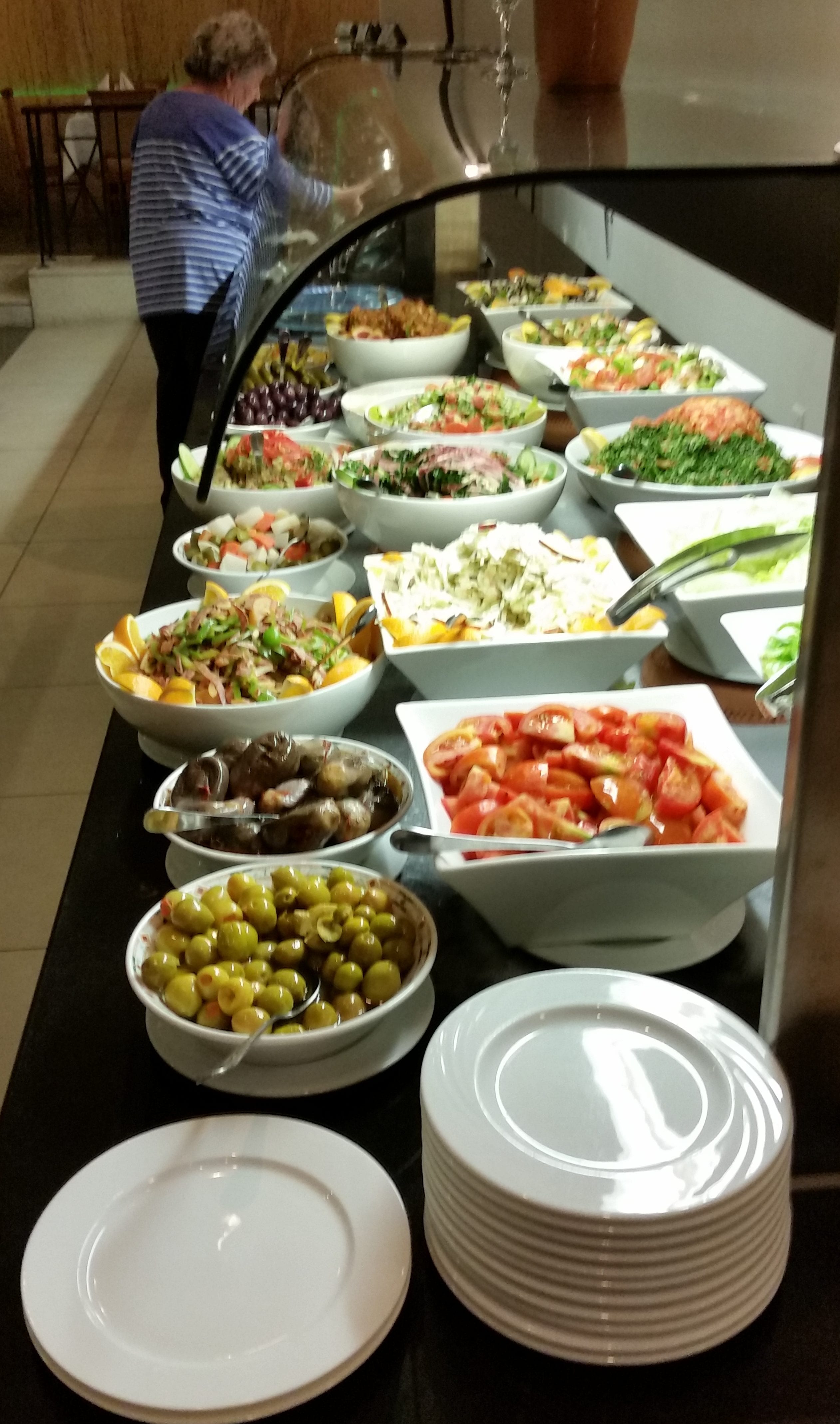
Salad buffet at the Guest House near Petra
A typical Jordanian and Israeli breakfast buffet consists of a number of items catering to American and other western peoples: juice (often canned and therefore disappointing), cereal (usually unsweetened) and milk, roasted potatoes, steamed tomatoes, baked beans, maybe some sauteed mushrooms, “beef sausage” (what we would call hot dogs), and eggs prepared in the usual ways. Sometimes you can get a made-to-order omelette. There is an assortment of small pastries, rolls, and breads for toasting. Then, because this is the Middle East, there is eggplant–sometimes simply roasted, sometimes sauteed in combination with other vegetables, eggs, or cheese. Big bowls of hummus and thick yogurt stand next to smaller bowls of the herbs and spice mixtures you can sprinkle on top, and next to those are the cheeses: cubes of salty Feta sprinkled with chia seeds, thin slices of Provolone or Havarti, and foil-wrapped triangles of bland cheese product of some sort.
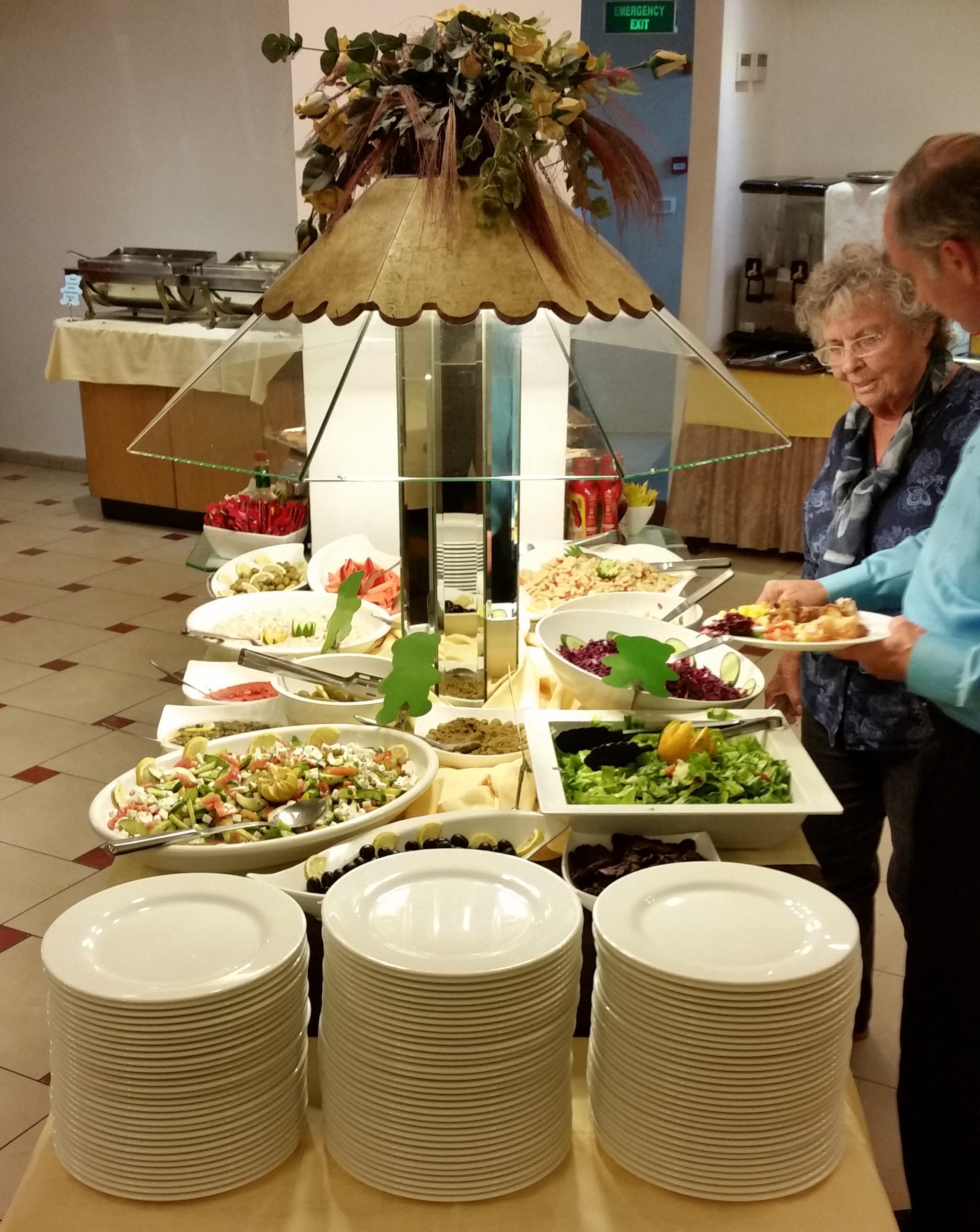
Salad buffet in Jerusalem
Sometimes typical American-style cold cuts are set out. Usually there is a basket of fresh fruit, or quartered grapefruit, or bowls of canned peaches, pears, and fruit cocktail (all of which tend to be less sweet than their American counterparts). In addition, there are often dried fruits, too: raisins, apricots, dates, and figs. Most importantly, there are the fresh vegetables: chopped tomatoes, sliced peppers, shredded carrots, and the best cucumbers that didn’t come out of your own garden. Usually there are also three or four different salad combinations, and an assortment of olives and pickled vegetables. And there is always pita, ready to stuff with any or all of the above.
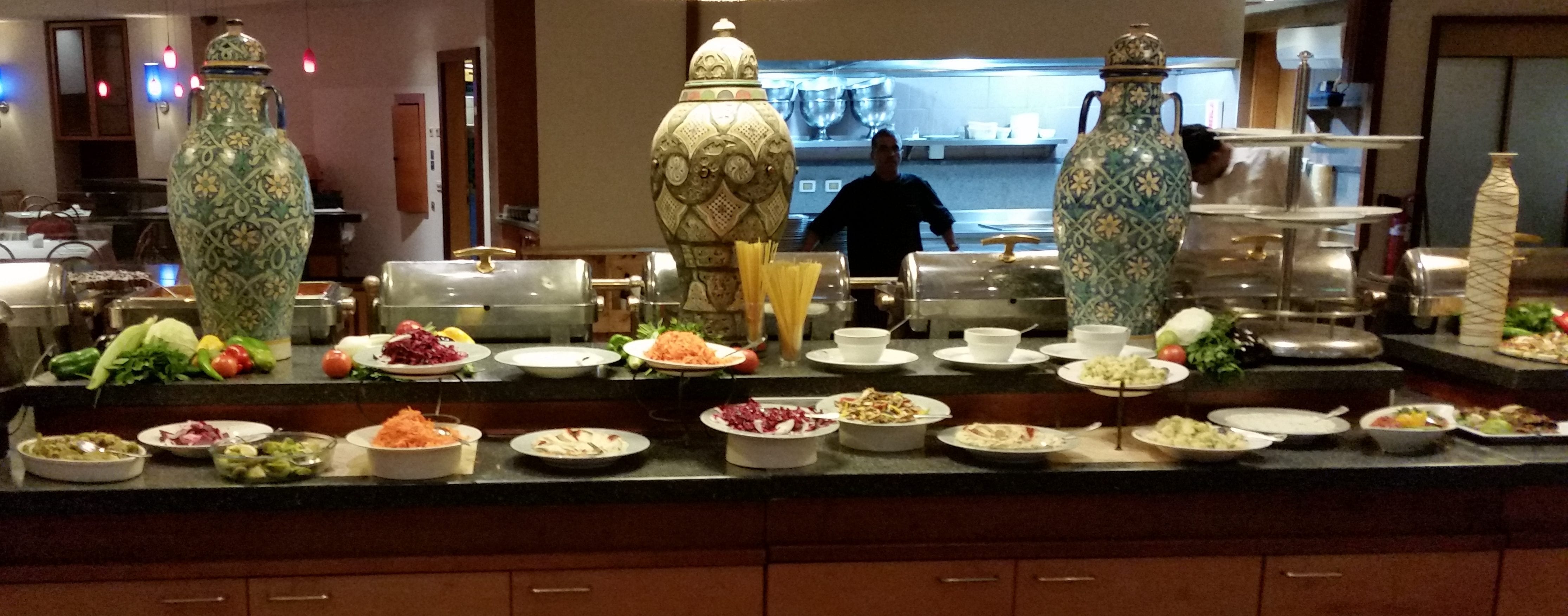
Salad buffet in Jericho
For lunch, we usually make ourselves a pita sandwich from the abundant breakfast buffet and pick up an apple or a banana if they look good–or some dried fruits if they don’t. Sometimes we buy a shawarma: swat filled with spicy lamb or chicken and grilled vegetables–the Middle Eastern equivalent of a Philly cheesesteak.
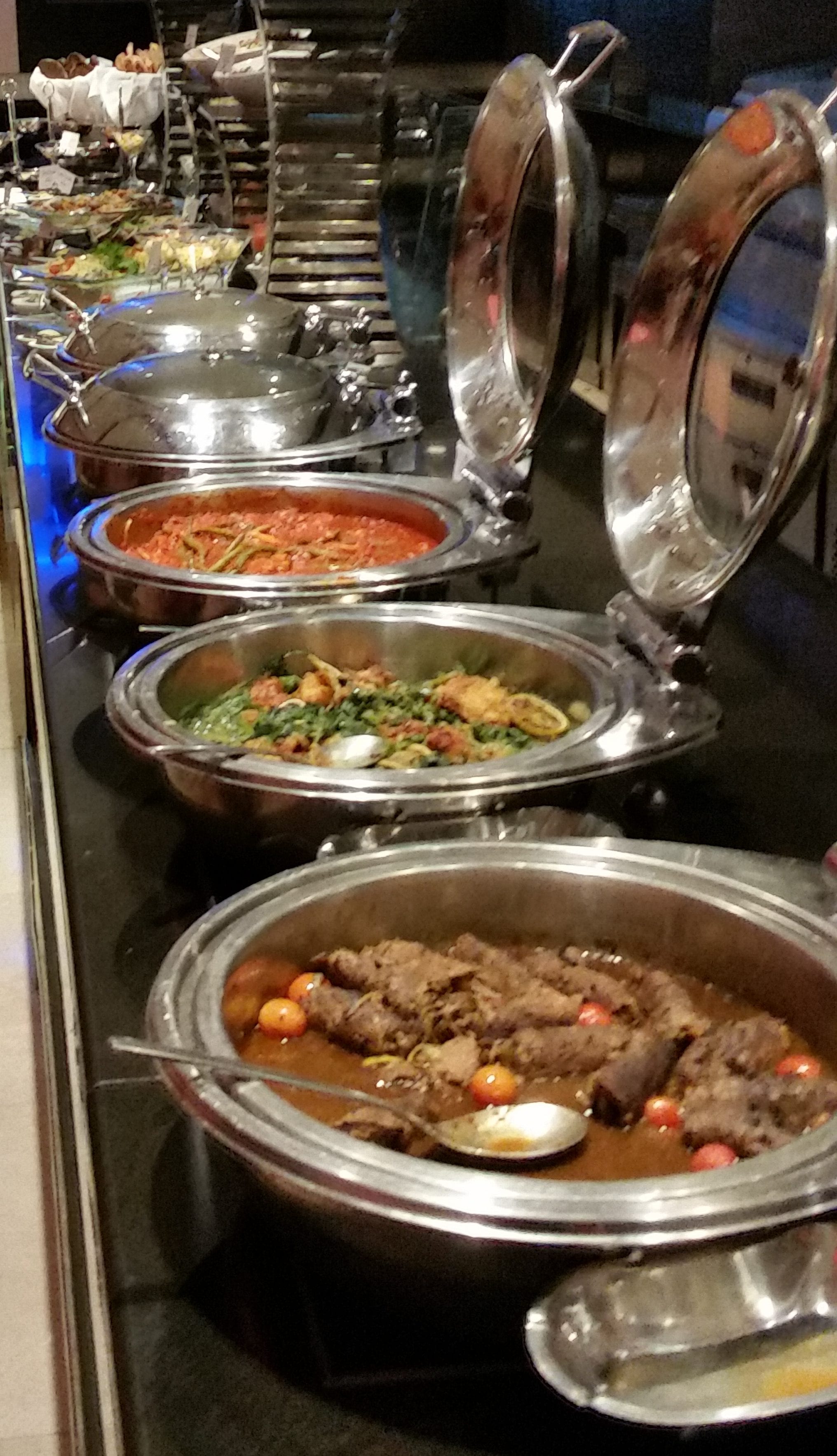
Main dish buffet in Ammon
At dinnertime, the salad bar is an expanded version of what was available for breakfast:more pairings of fresh vegetables, always a carrot salad, often some combination featuring beets, corn, capers, or lentils, and of course, what Stephanie (one of the younger members of our group) has begun calling “the eggplant of the day.” In addition there are several warm vegetable choices, from standard steamed broccoli, cauliflower, or green beans to stuffed artichoke hearts and marinated baby aubergines (eggplant again) with tomatoes. Every now and then we get something really unusual, such as chopped kohlrabi, purple-pickled jicama, or baba ganoush (that’s eggplant-based, too) with pomegranate seeds.
Rice and roasted potatoes are always part of the main-plate options, as are roast chicken, either beef or lamb, generally some sort of fish, and sometimes turkey–all with a variety of interesting sauces and condiments. (Nancy especially likes a mixture of finely chopped parsley and mint.)
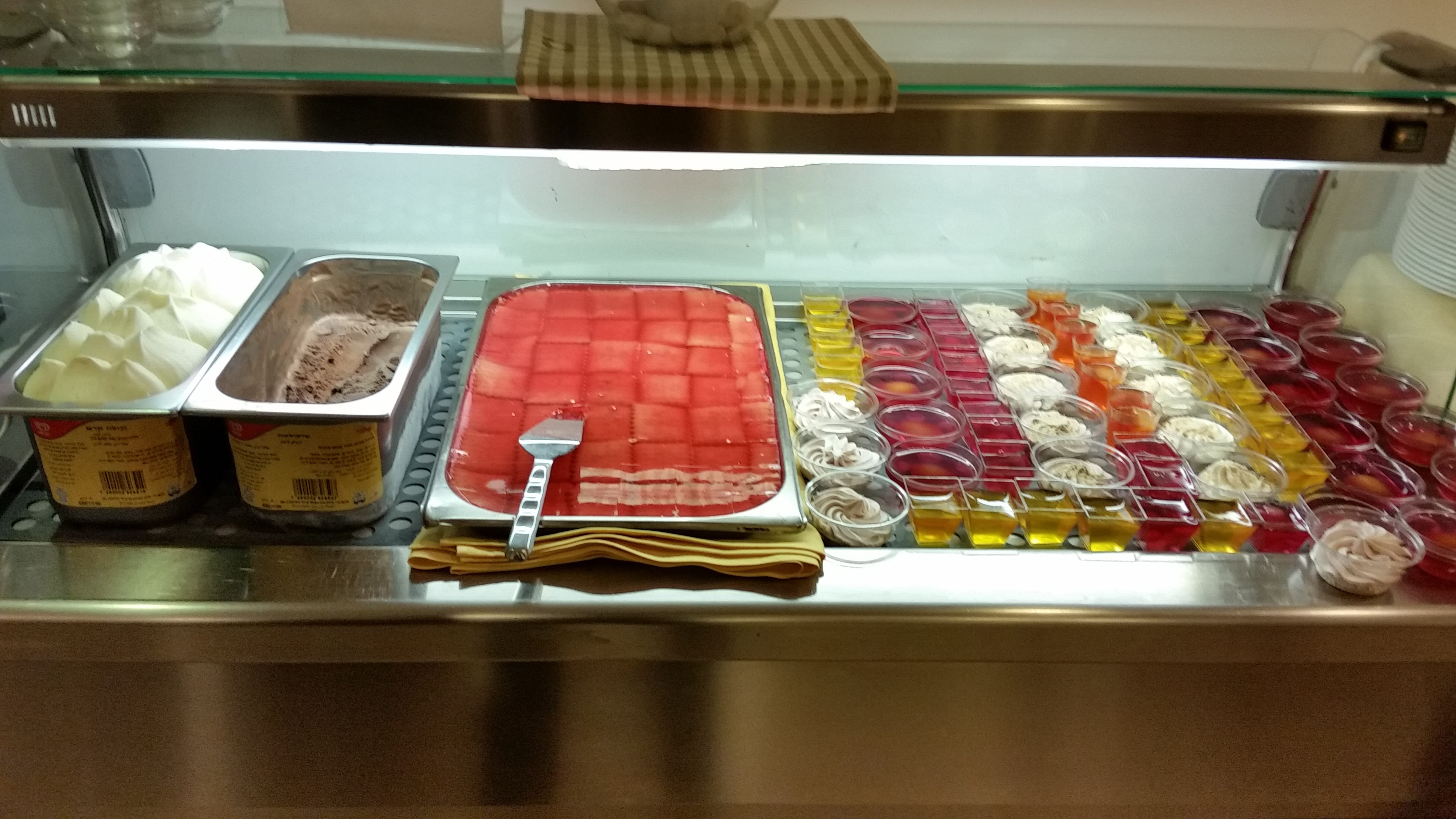
Dessert buffet in Jerusalem; notice that while there is still plenty of Jell-O, most of the chocolate ice cream is gone
Finally, there is a dessert section with a tempting variety of cakes layered with a mousse-like gelatin chiffon, cut into sampling-size squares; small pastries; rice or bread pudding, and maybe ice cream.
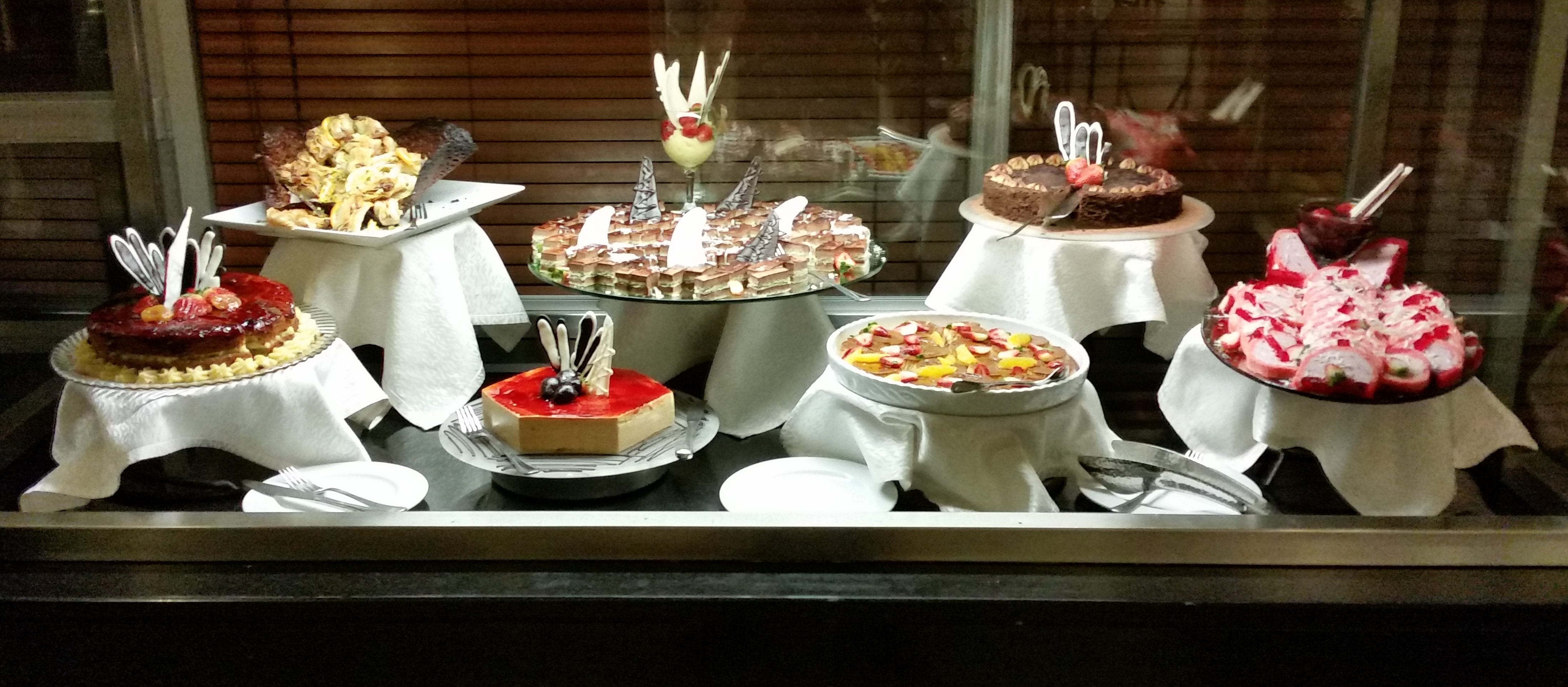
Dessert buffet at the Guest House
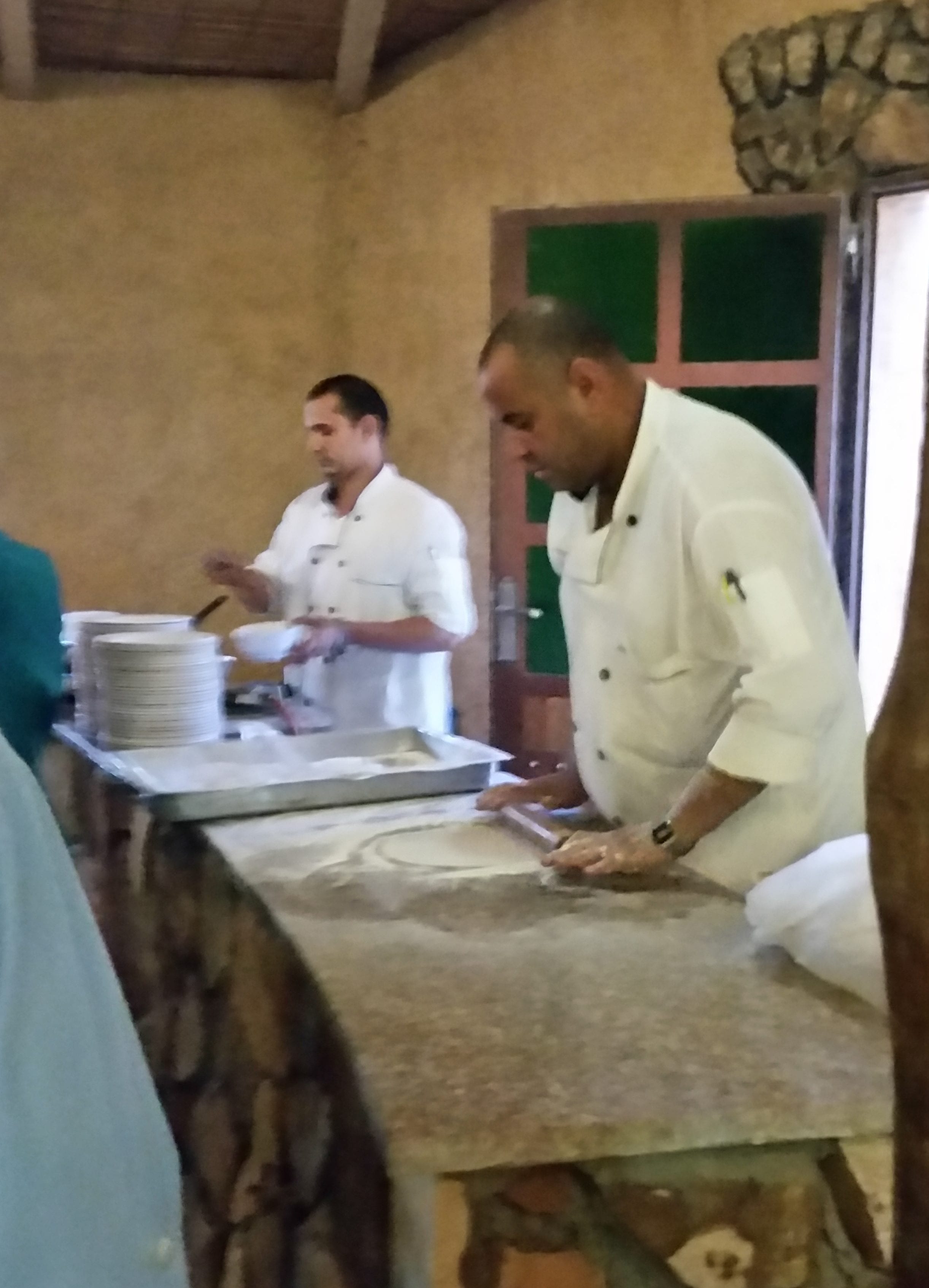
Rolling out swat
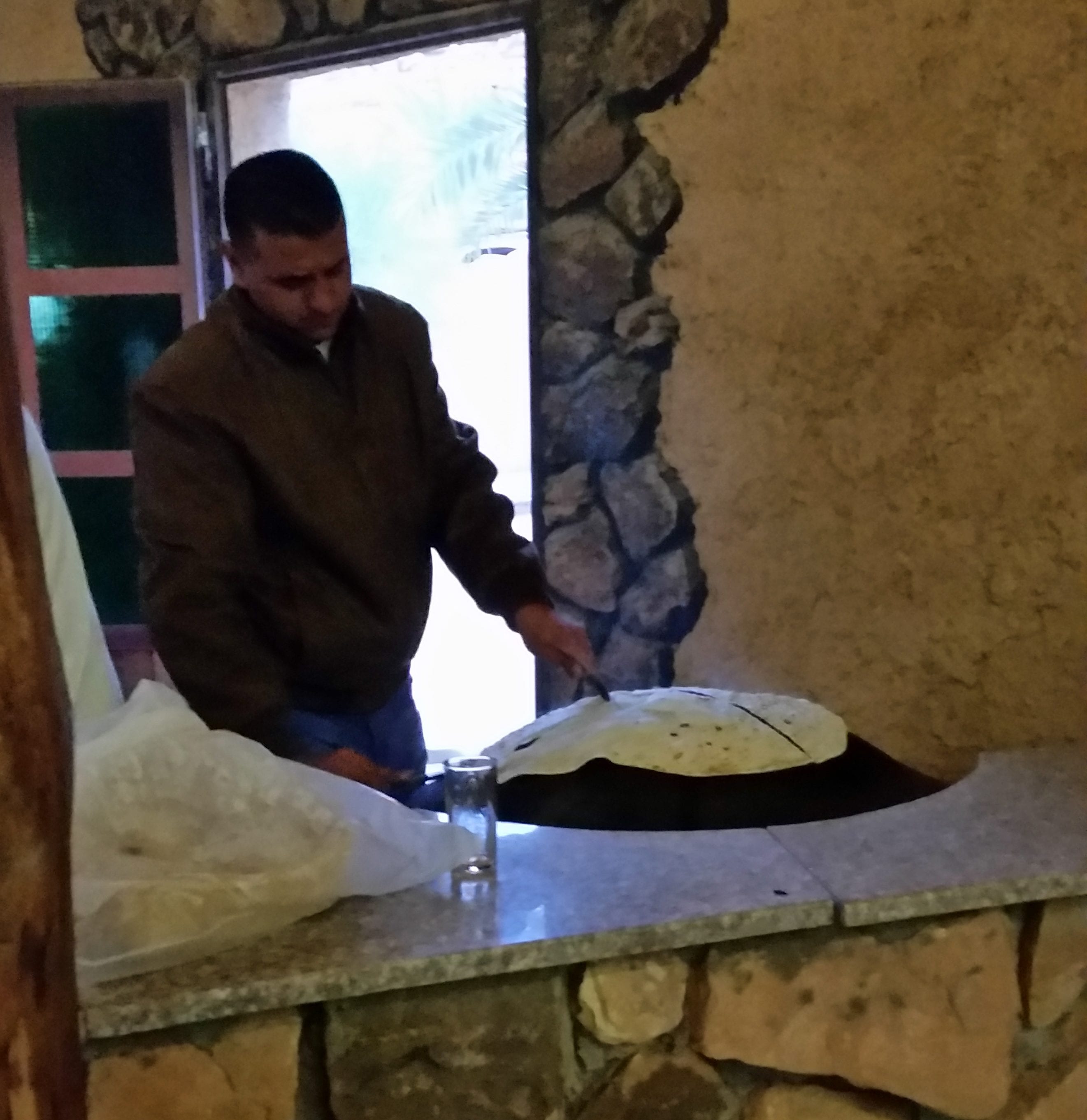
Cooking swat
Today at breakfast, in addition to the now-familiar spread, we were treated to some freshly baked swat: a hand-flattened bread very similar to Indian naan, cooked on a round iron like those used for tortillas and crepes. There’s nothing like fresh hot bread, no matter what culture it comes from!
Today we would leave Jordan and enter Israel. After collecting our things and loading the bus, we were a little surprised to discover that we were heading south towards Aqaba, for centuries an important Red Sea port, and now also a lush resort. Since we had left Amman, we had been travelling on the King’s Highway, which runs along the eastern mountains above the Dead Sea and the Wadi Araba. There is no way to get to the Dead Sea Highway that runs up the west side except to go around the lifeless lake, so we had to go south in order to eventually go north. The way may have seemed long, but it allowed us to glimpse the Red Sea–as well as a little of Egypt and Saudi Arabia in the distance. We had not realized how close we would come to those other countries.
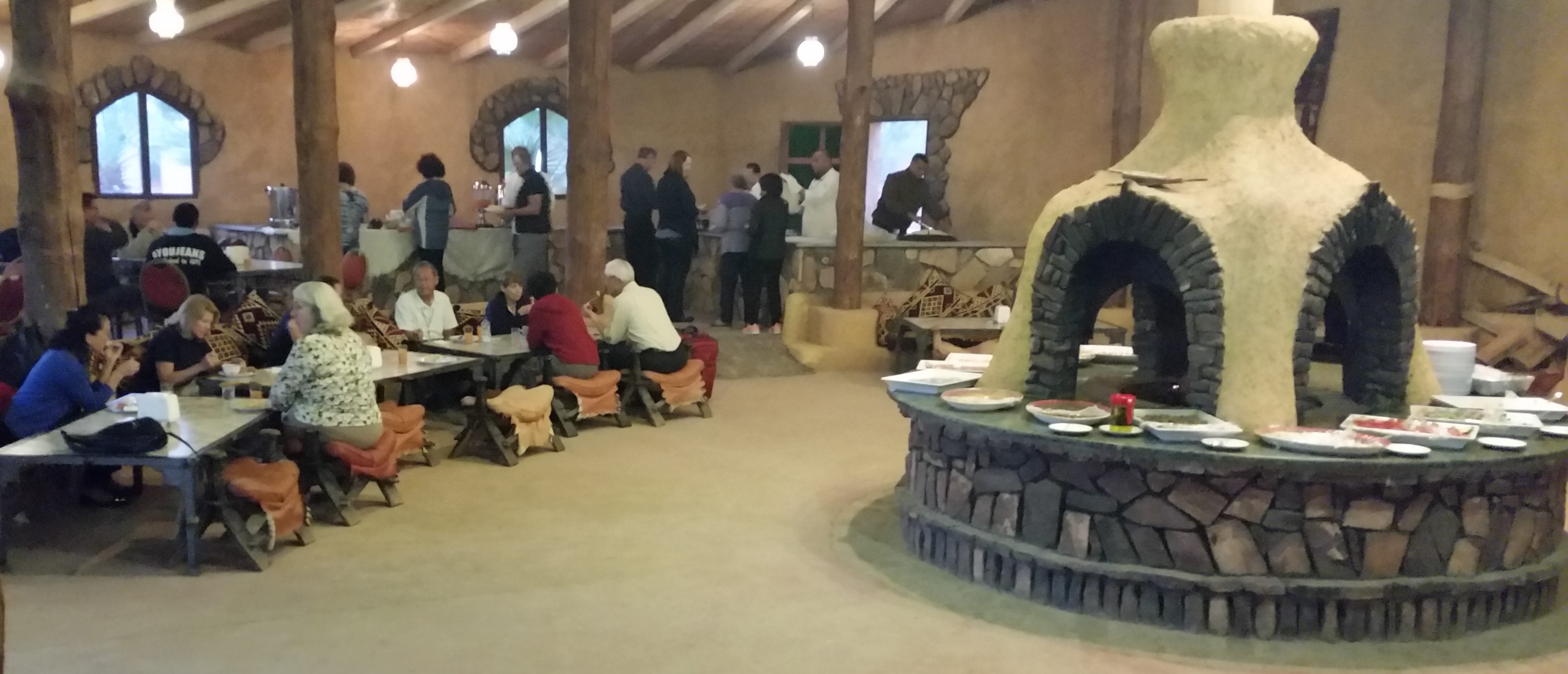
Dining room at Beit Ali. Our exotic accommodations inspired Emery to compose an Aladdin-based song that began: “Beit-Ali! Happy are we, living like Bedouins …”
We wanted to get an early start for the five-hour drive to Jerusalem, especially since no one was sure how many more hours might be required to get past Israeli security at the border crossing. The drive itself was fairly uneventful, except at one point, both Zaid and Hani were so surprised to see that what looked like a large body water in the distance was not a mirage but an actual lake that they had to stop for a minute to take pictures. Neither had ever seen so much run-off collect after a rainstorm. For Michael, the most memorable part of the drive was the astonishing realization that even though it is shrinking, the Dead Sea is still huge. Its thirty-mile length from north to south seemed longer than expected. Hani slowed the bus so Zaid could point out the Arnon Valley off to our right. Locals call it the Grand Canyon of Jordan, but if what we could see from the bus was representative, “Grand” is an overly optimistic descriptor.
Our first close-up glimpse of the Jordan River was similarly underwhelming. At this point in its journey from the hills of Galilee, most of its water has already been diverted for human use and irrigation. No wonder the Dead Sea is shrinking.
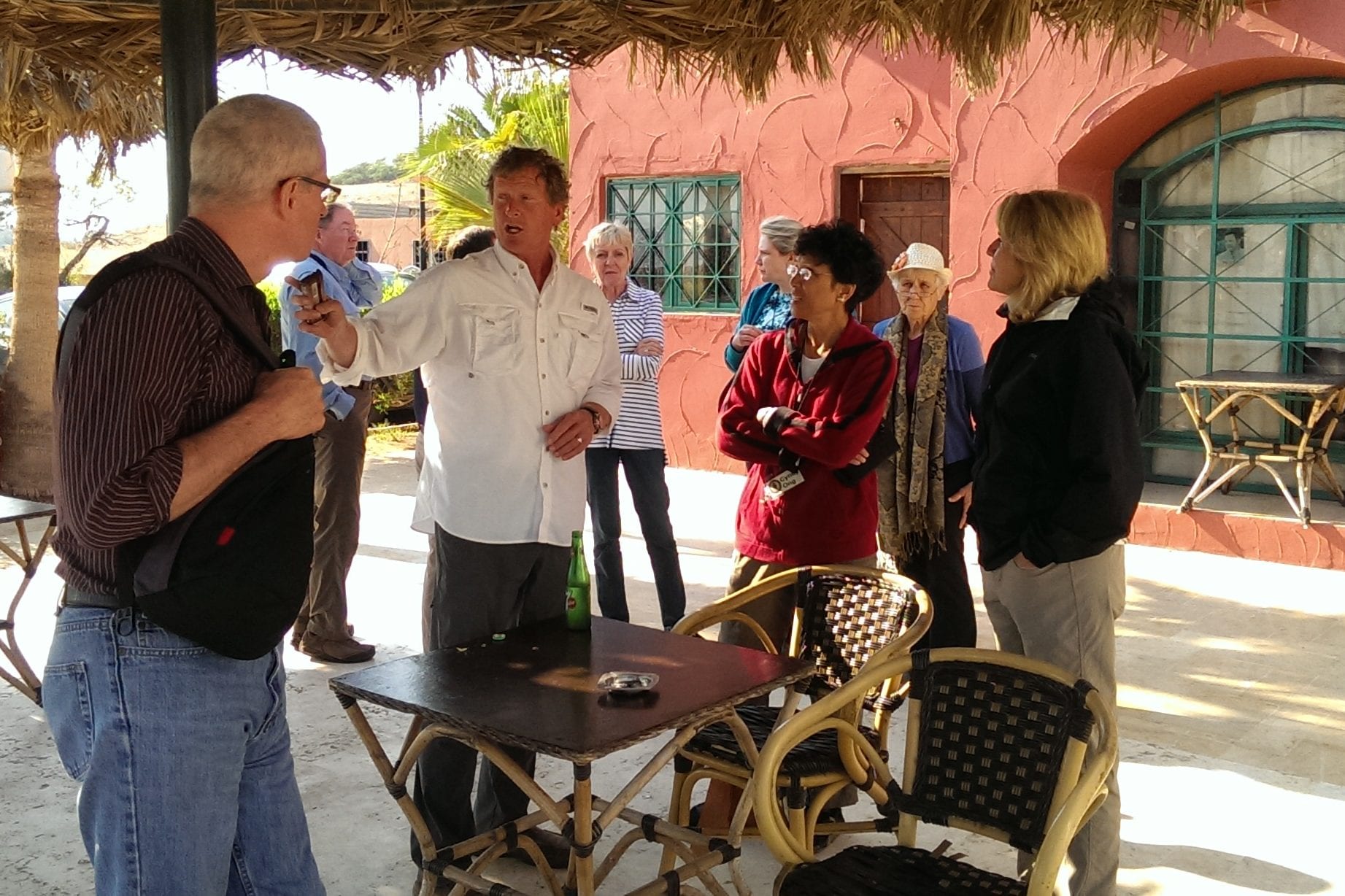
At a rest stop in southern Jordan
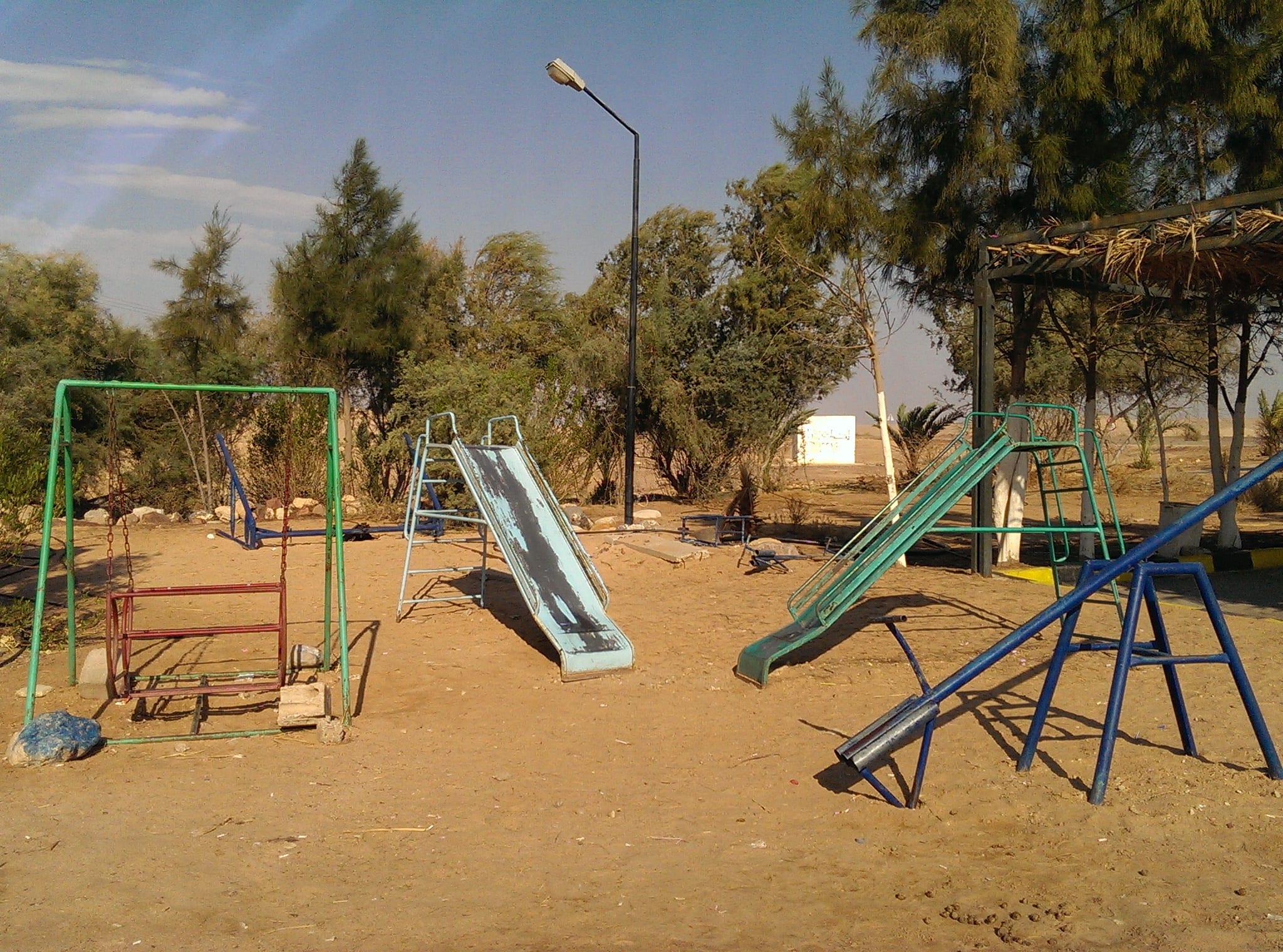
A Jordanian family with young kids vacated this rest-area playground just as Nancy approached with her camera
As we approached the Israeli border at the Allenby Bridge, it quickly became apparent that crossing was not going to be a simple process. Heavily armed military personnel on the ground and manning lookout towers, tall fences, and lots of barbed wire created a tense, even ominous atmosphere. Jim and Zaid reviewed all possible crossing scenarios at least twice so that everyone would understand what we might be getting into. Border guards could come on the bus to examine our passports and question us individually, or they might wait until we were off the bus, each with all our own luggage, to ask where we had been, what we had done, whom we had met, and what we were carrying. We might simply be waved through as a group, or a few might be pulled aside for private interrogation. Expect all our luggage to be put through scanners like at the airport, and don’t try to take any bottled water with you. (That was a blow: on Jim’s recommendation, we’d all been drinking and brushing our teeth exclusively with bottled water, and many of us still had nearly-full liter bottles that we’d purchased only this morning. Emery had filled her Camelback, and now had to find a way to empty it before we got to the checkpoint.) The crossing ordeal might take as little as forty-five minutes, or it might take more than three hours. Everything depended on the whims and current mood of the border guards.
“If they ask how you know the people you’re traveling with, just tell them we all belong to the same church, and we’re coming to visit the hoy sites–which is true,” said Jim. “Always tell the truth, but don’t say any more than you have to, because if you start going into any detail, the more questions they’ll have.”
The prayers we had offered for expedited passage were answered when they let us go through as a group, without any luggage screening, and with each o talking to only one border guard, who checked our passports and asked very few questions. The only query Nancy got was, “Have you been here before?” (Yes, in 1976.) Everyone in our group was lined up to get back on the bus within half an hour: a miracle! Jim and Zaid said they’d never before had a group get through so quidkly. (We have no pictures of the border crossing because no photos of the facility or its guards are allowed.)
The Allenby crossing is south of Jericho, so we still had to drive through the West Bank for about an hour before we reached Jerusalem. The landscape reminded us of the scenery along I-80 in southern Wyoming: light brown stony hills with very little vegetation. The land’s obvious sterility made it hard to believe that so many people for so many centuries have fought to the death for control of it.
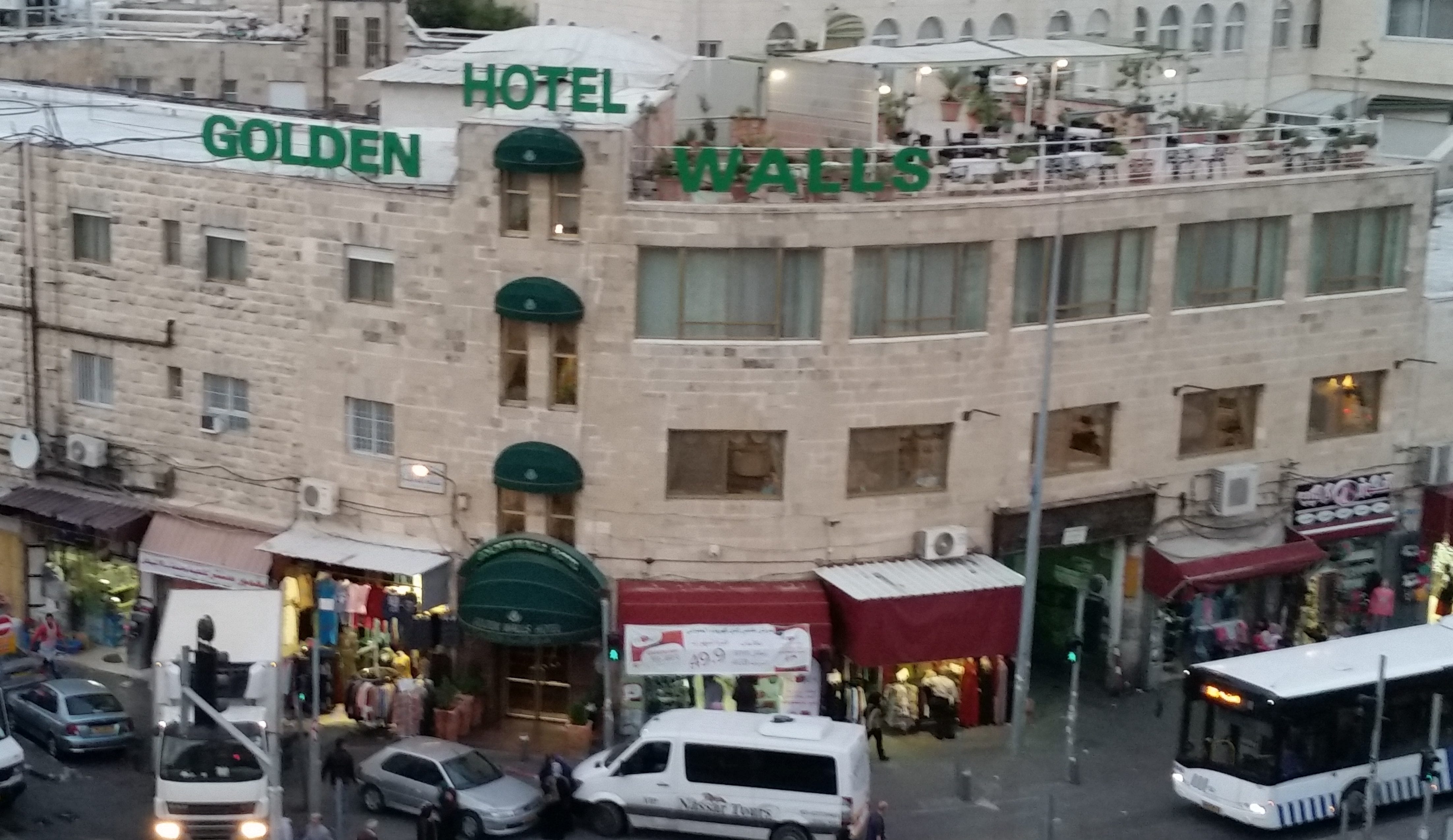
Golden Walls Hotel
In the Bible, travelers are always said to “go up” to Jerusalem. Now we know why. Like Amman, the Old City is set on a hill surrounded by deep valleys, although–also like Amman– urbanization has spread down into the valleys and far back up the surrounding slopes. Our hotel, the Golden Walls, is located just outside the walls near the Damascus Gate, which leads into the Arab Quarter. Soon after we checked in, Jim led an expedition into the Old City. It was immediately apparent that we weren’t in Kansas any more.
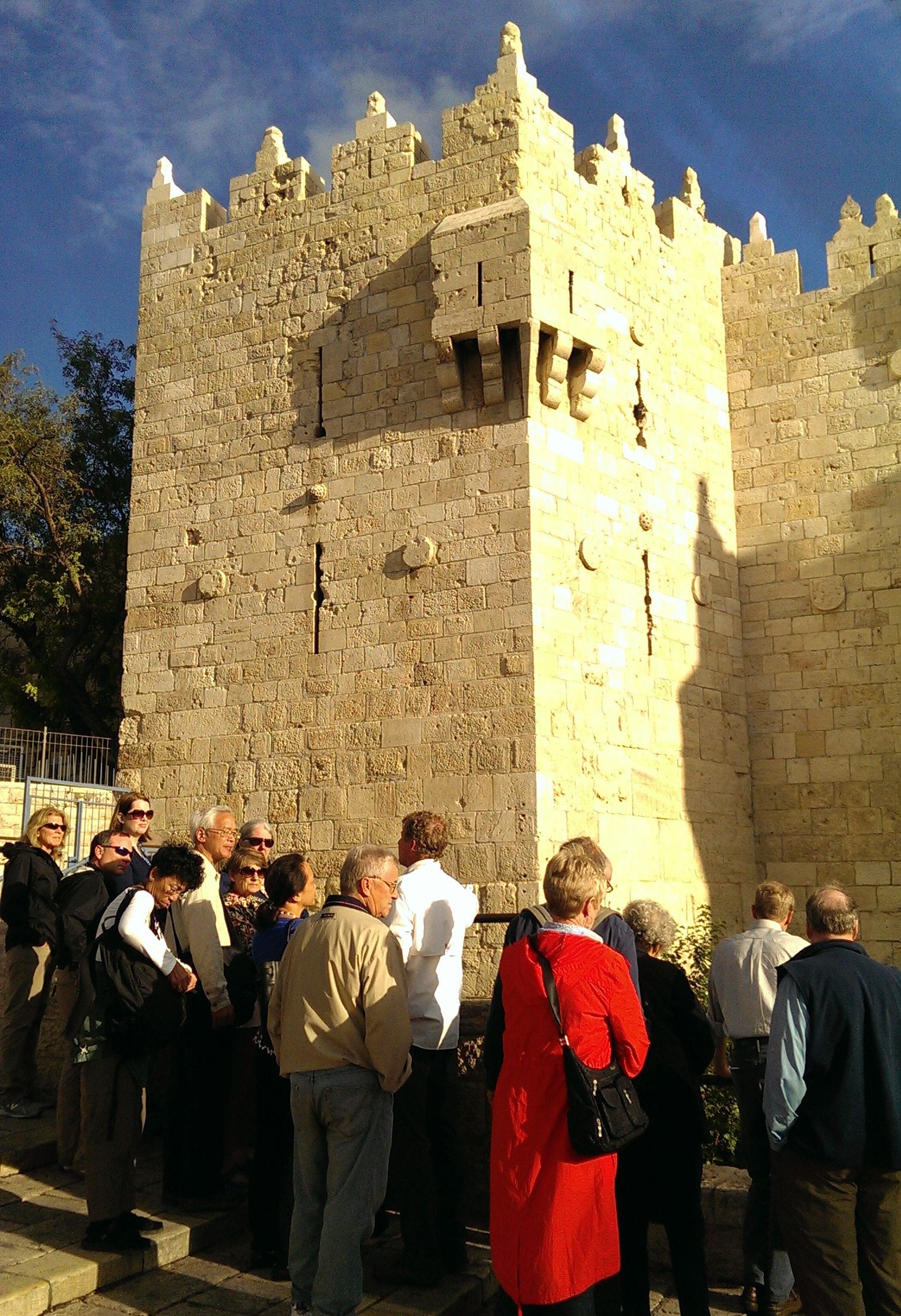
Outside Damsacus Gate
Trying to describe Old Jerusalem is one of those “You’ll just have to go there yourself” challenges. Its lanes are crooked and narrow, with ancient stone pavement so uneven that you feel compelled to constantly watch your footing even as your eyes are inexorably drawn up and out to the kaleidoscopic colors and movement swirling around you. Tiny shops bursting with merchandise crowd the streets as closely as the people. One’s visual, aural, and olfactory senses are almost overwhelmed, and the energy is palpable. Nancy was experiencing the city for the second time, having visited as a college student; as a first-time visitor, Michael was totally enthralled.
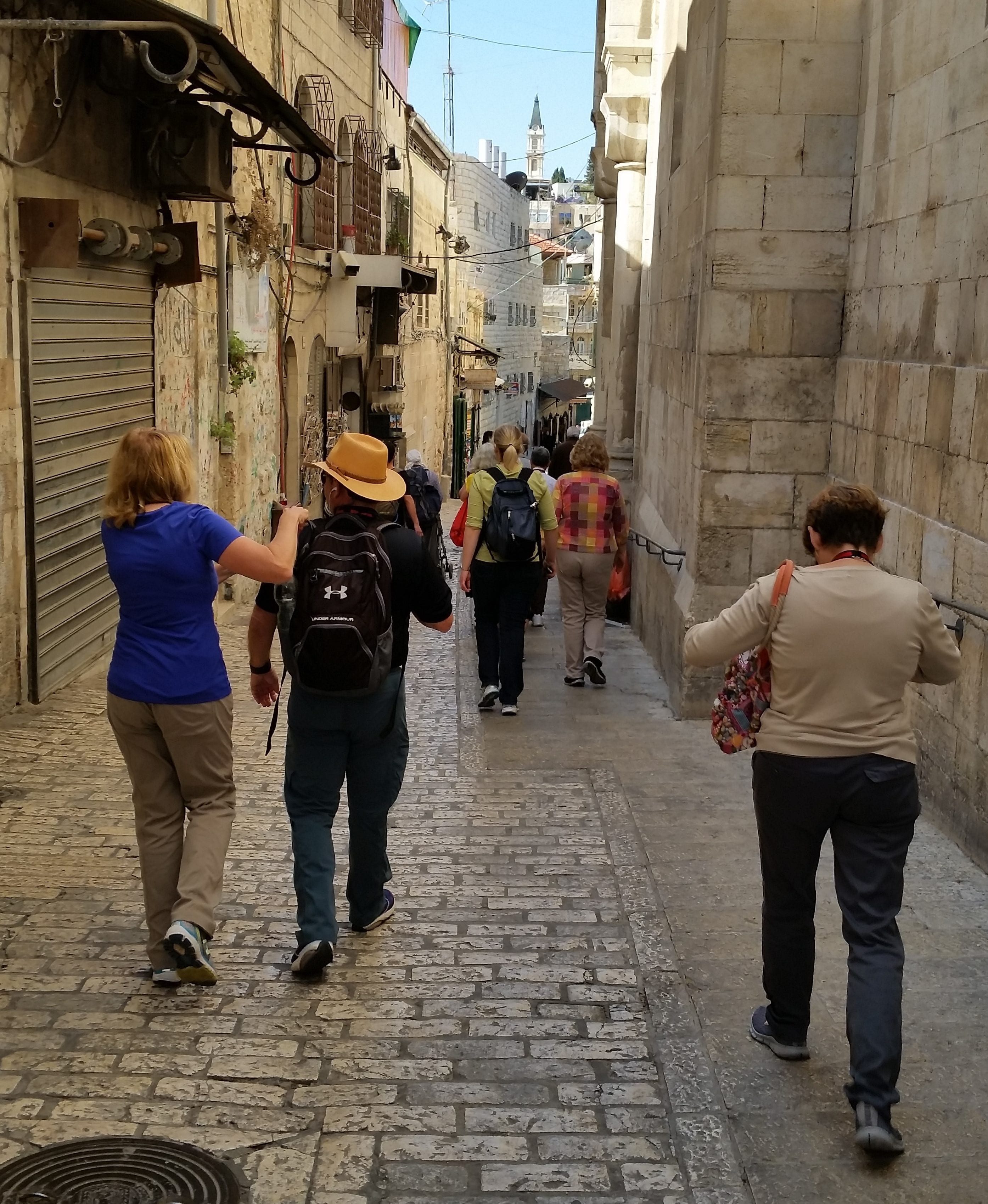
Via Dolorosa
Passing between bands of well-armed military men and women, we turned up the Via Dolorosa and headed toward the Lions’ Gate near the north side of the Temple Mount. Unexpectedly, a shopkeeper stopped Jim and asked if he would like to take our group into the upper floor of the Antonia Fortress. This was the stronghold Herod had built against the wall of the temple for the Roman soldiers who were charged with quashing any threat to the peace on the temple grounds that might spill over into the rest of the city. (Not unlike Israelis watching over the Palestinians–and vice-versa–today.) From this watchtower, we had a unique view of the Temple Mount and the city beyond.
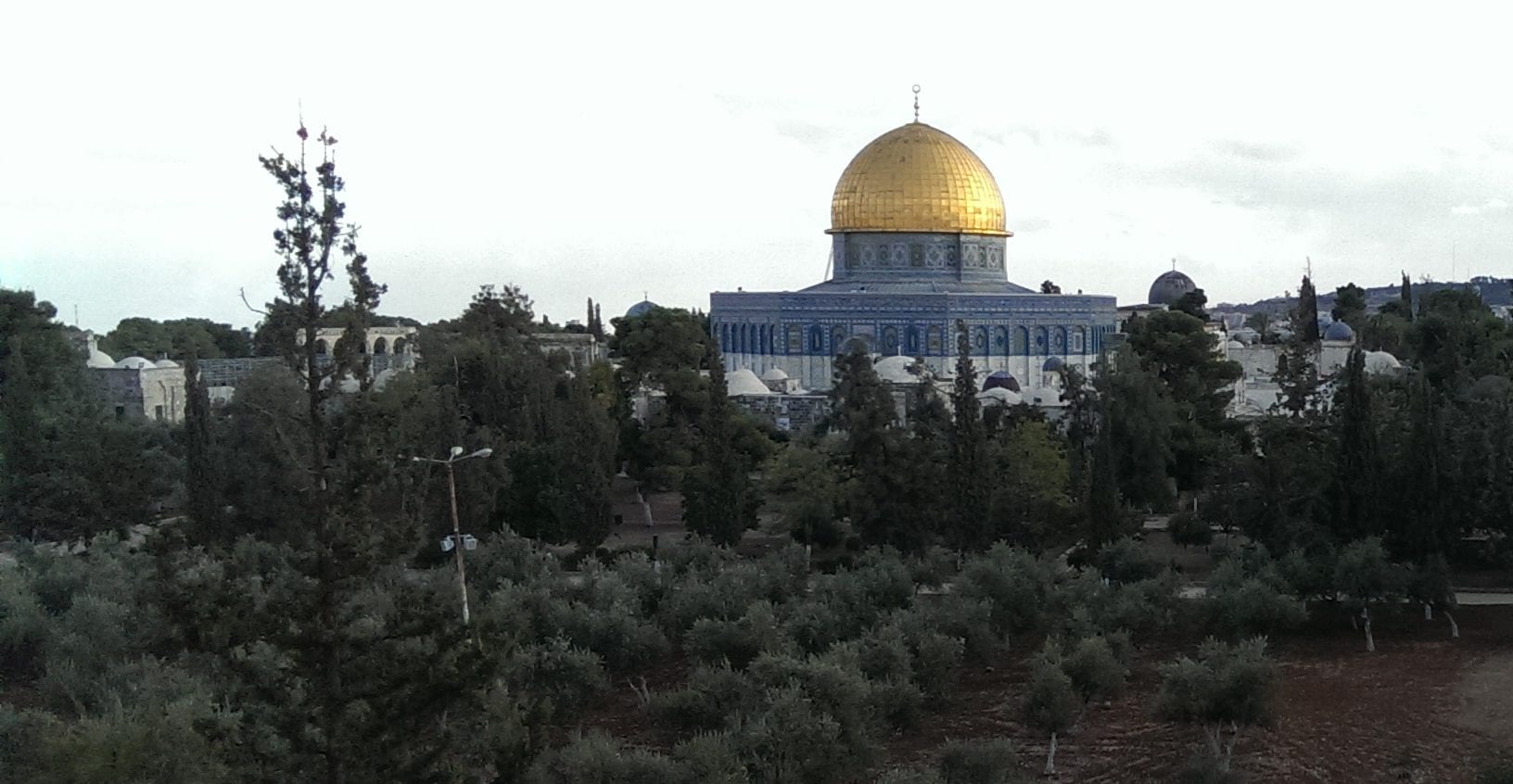
View of a garden on the Temple Mount from the Antonia Fortress
Because the shopkeeper had been so hospitable, we of course had to return his generosity by patronizing his store. Mark M. bought a shofar (a ram’s horn used as a three note trumpet) and Emery bought a silver Star of David for her charm bracelet. Nancy looked at an embroidered cotton blouse that would have made a unique and comfortable addition to the all-black outfit she’s required to wear for concerts, but the embroidery on the only black blouse in her size didn’t meet her rigid workmanship standards.
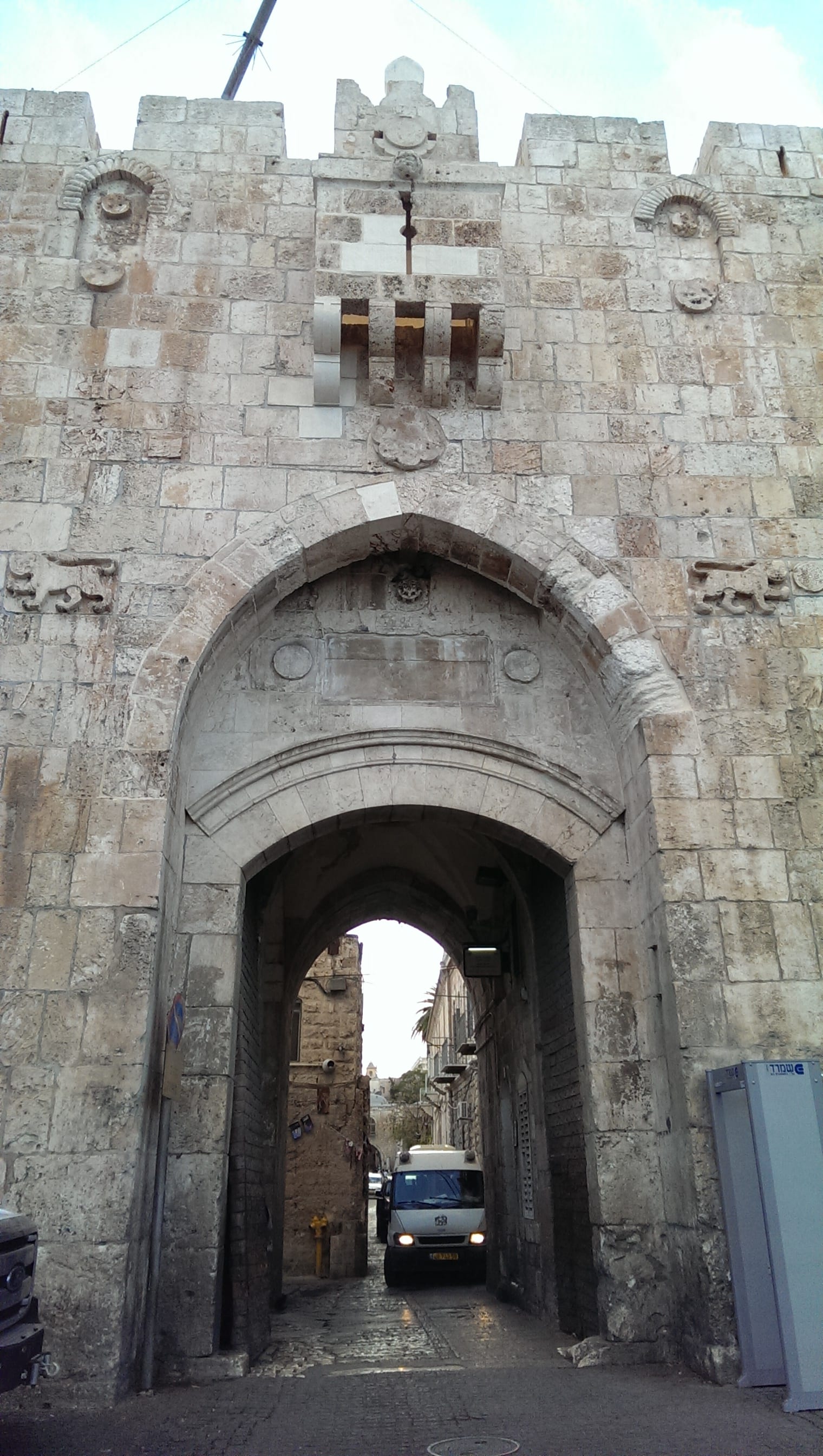
Lions’ Gate
After our commencial break, we continued up to the Lions’ Gate, also known as St. Stephen’s Gate in honor of the first Christian martyr, who is believed to have been stoned just outside this gate. From there we retraced our steps back to the hotel, with a short detour to buy more bottled water. With an hour or so of free time before dinner, Nancy did some laundry in the bathroom sink while Michael went down the hall to the lobby, where he could do some writing while waiting to welcome his sister, Pat, as well as our friends Richard and Judith, who had opted out of the Petra portion of the trip. They had flown into Tel Aviv this afternoon and were supposed to arrive in Jerusalem by dinnertime. Understandably, they looked somewhat bedraggled when they got here, but we were happy to see them and grateful that they made it safely.
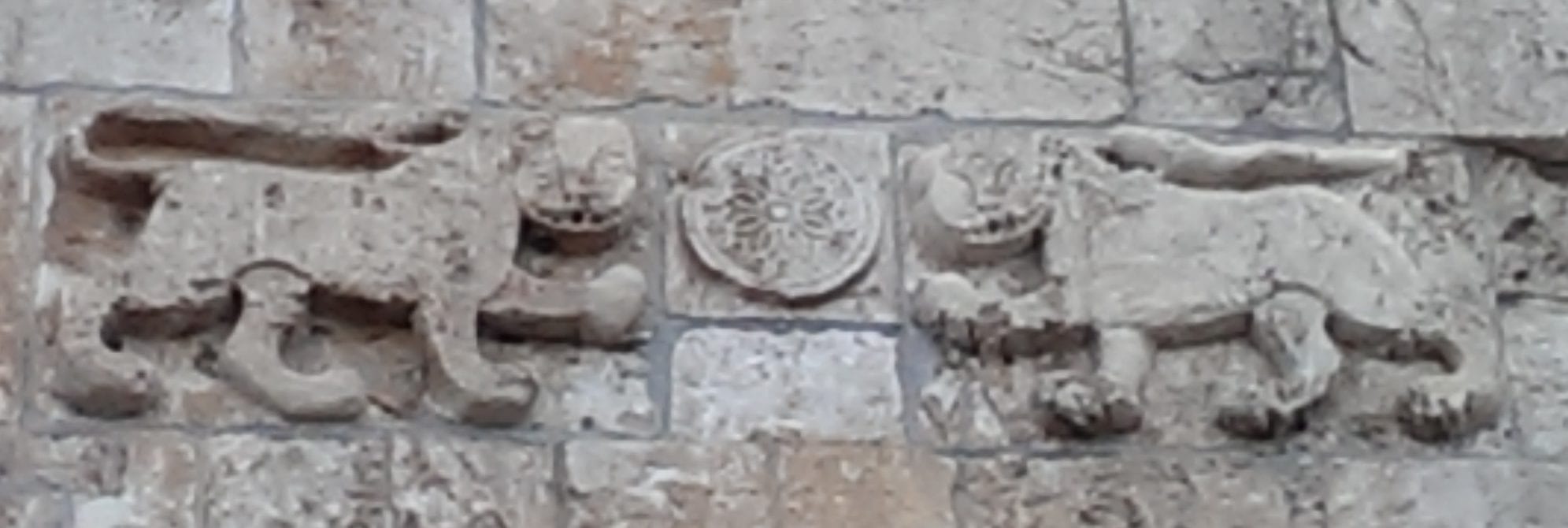
Carved lions decorate the walls beside the gate
Apparently, buffet meals at Israeli hotels are not much different from Jordanian ones, because everything served in the Golden Walls dining room tonight looked fairly familiar.
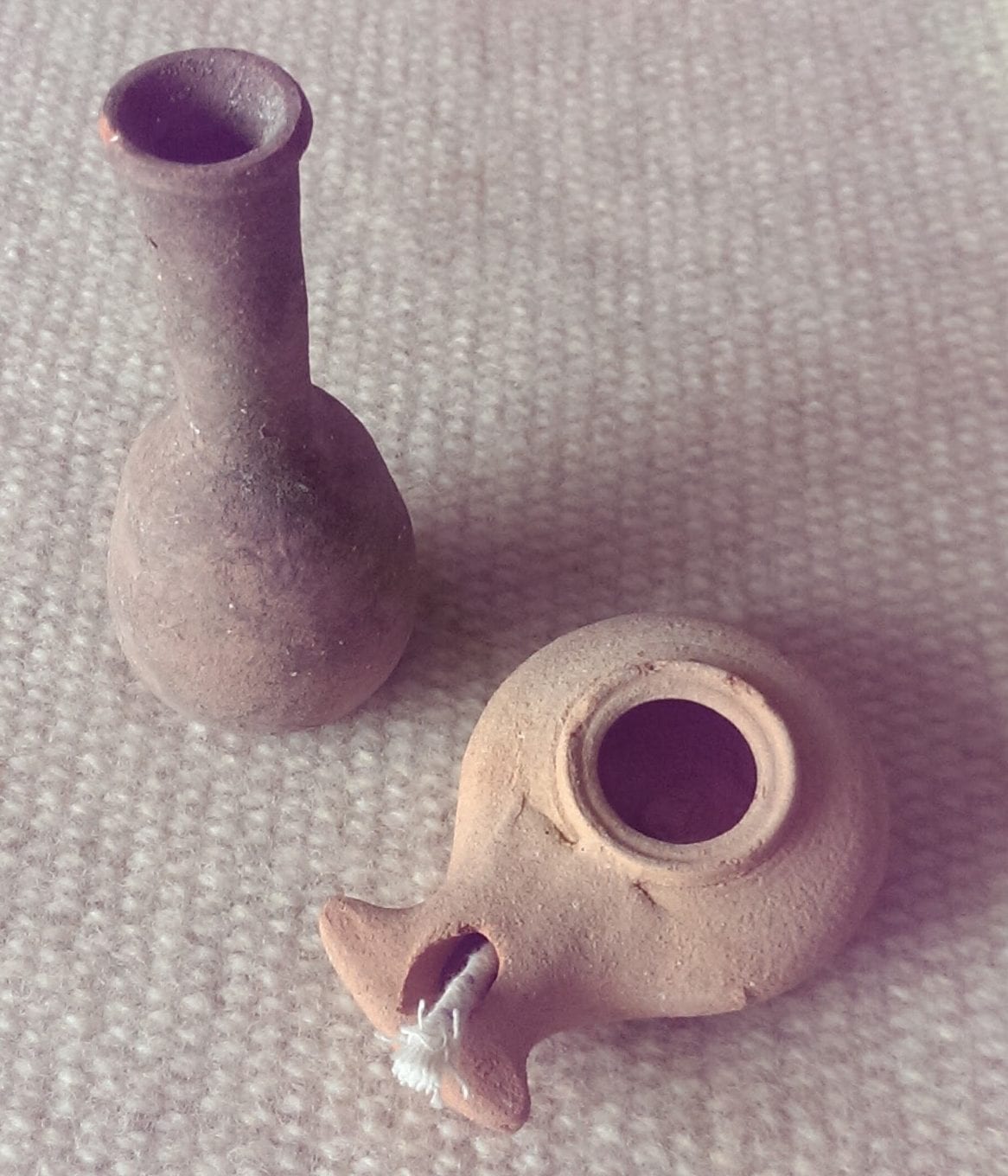
1st-century oil vessel and lamp
After dinner, our group–now numbering twenty-six–convened in a meeting room downstairs for orientation and a devotional lesson to review the biblical context and significance of the places we plan to visit here in the Holy Land. The focus of tonight’s discussion, led by Jim Gee, was the parable of the ten virgins. Handling a clay lamp and oil vessel from the first century AD that Jim brought to illustrate his lesson helped us better understand the point of the parable and how we can apply it to ourselves.
Having been on a plane for the past twenty-plus hours, Pat tried really hard to endure through the meeting, but finally had to just get up and walk out so she could go to bed. None of us could blame her.
Pat was not the only one having a hard time staying awake through the meeting. All of us were glad to be here in Jerusalem at last; nevertheless, we were eager to get to bed so we would be better prepared for tomorrow’s adventures in the City of Peace.
Leave A Comment